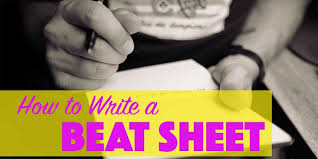For a long time I have struggled to write a screenplay. Where do I start? Who are my characters? What is the logline? The storyline. The synopsis. There was always so much to think about and analyse which meant it was inevitable to get something wrong. As a budding Screenwriter, I wanted to figure out how to confidently tell a compelling story every time I wrote. But I couldn’t figure it out yet. I always knew something was missing but I couldn’t really tell what. I ran into a Nollywood veteran who gave me directions to a classic book for Screenwriters. He explained what a beat was. And that I needed a beat sheet to give my story direction. I read through Blake Snyder’s 15 Beats formula as he strongly recommended and began taking notes.
I am going to summarize the main points from his book (Save The Cat) and I am going to let you decide whether you need a beat sheet or not.
Here are Blake Snyder’s 15 Beats with brief definitions:
1. Opening Image: Introduces the protagonist’s world, setting the tone for the story.
2. Theme Stated: Clearly expresses the story’s theme or message.
3. Set-Up: Establishes the protagonist’s ordinary world, flaws, and desires.
4. Catalyst: An event that sets the story in motion, disrupting the protagonist’s life.
5. Debate: The protagonist hesitates, weighing options and considering the journey ahead.
6. Break into Two: The protagonist commits to the journey, leaving the ordinary world behind.
7. B Story: Introduces a secondary storyline or character that supports the main plot.
8. Fun and Games: The protagonist experiences new situations, meets new people, and learns new skills.
9. Midpoint: A turning point that shifts the story’s direction, raises stakes, or reveals new information.
10. Bad Guys Close In: Obstacles, antagonists, and internal fears intensify, testing the protagonist.
11. All is Lost: The protagonist faces their darkest moment, with seemingly no way out.
12. Dark Night of the Soul: The protagonist confronts their inner demons, flaws, and weaknesses.
13. Break into Three: The protagonist has a revelation, finds a new approach, or gains newfound strength.
14. Finale: The climactic final confrontation, where the protagonist faces their greatest challenge.
15. Final Image: A lasting impression, showing the protagonist’s growth, change, or new reality.
These beats provide a framework for storytelling, helping writers structure their narratives and create a compelling arc for their characters.
With this formula, I knew I would never write a boring script again. Of course, the advice from Blake Snyder’s Save The Cat isn’t rigid. Life does not always fit into our tidy formulas. However it really impressed upon me the need to make research, study and apply specialized knowledge to enhance my prospects in the ever competitive film Industry.
So, why do you need a beat sheet? To guide you in order to help you write a compelling story.


